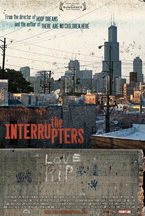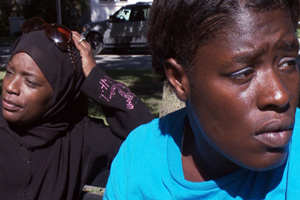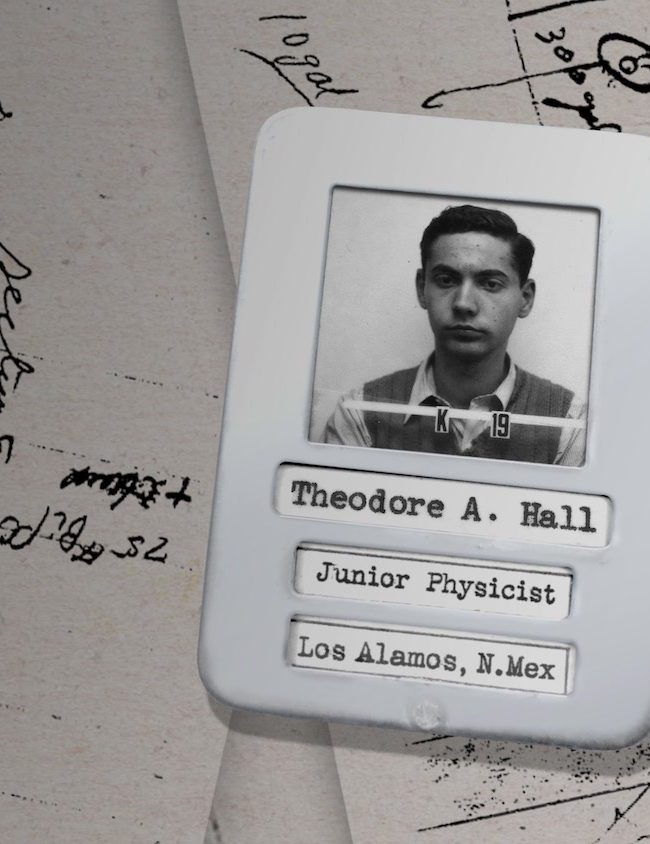
(The Interrupters world premiered at the 2011 Sundance Film Festival and was picked up for distribution by Cinema Guild. It opened theatrically on Friday, July 29, 2011. Visit the film’s official website to learn more.)
On the scale of epic American themes I rank racism first. For a nation sprung from the loins of vagabonds, pioneers, and wayward aristocrats, for all our gnarled roots, we have always been surprisingly squeamish about “the Other,” and darker skin in particular. We make queasy gestures toward reconciliation, but beneath the lily-white laugh track there’s a world of narrative that remains hidden. This late in the game there are still vast tributaries of culture and subculture to trawl. If we’re talking about urban Black mythology it’s easy to think of The Wire, David Simon’s Baltimore epic. Cast and shot in the streets, but heavily padded with narrative, it blurs the boundaries of reality and fiction in fascinating and problematic ways, particularly when it comes to violence. That is what is so astonishing about The Interrupters, the new documentary by Steve James and Alex Kotlowitz—it shows the other side, what happens when gang members go straight and what that can mean for their community. Though lacking the dramatic wattage of more sensational work, The Interrupters is a powerful and surprising meditation on violence and redemption.
The film’s provenance is notable. Both men have spent time in Chicago neighborhoods with Black families, James for his film Hoop Dreams, and Kotlowitz for his book There Are No Children Here. When Alex wrote a New York Times article on CeaseFire, a Chicago organization that trains former gang members to prevent shootings in their communities, the two men were inspired to collaborate on a documentary on the subject. CeaseFire was started by an epidemiologist who worked on preventing the spread of infectious diseases in Africa. When he returned to the U.S. he applied a similar public health approach to battling our epidemic of violence. Rather than viewing shootings as the unfortunate end result of larger systemic problems (the war on drugs, prisons, poverty), implicit in CeaseFire’s approach is the hopeful idea that prevention is possible at the source. As Tio Hardiman, one of the film’s few talking heads (and the Director for CeaseFire Illinois) puts it, “Violence is learned behavior.” This flatly counters the more entrenched myth that communities plagued by violence are somehow tragically linked to their fate, a view that James and Kotlowitz clearly share.
 The filmmakers’ approach to the story was simple, and reflected in the film’s title: they spent over a year following CeaseFire’s “violence interrupters,” ultimately choosing three as their subjects. These include Eddie, a soft-spoken young man who teaches art therapy and remains haunted by a murder he committed; Cobe, whose friendly smile and commitment to his family reveal few traces of his drug-dealing past; and Ameena, perhaps the toughest and most dogged of the group, the daughter of a notorious gang leader who narrowly missed following in his footsteps. Though she is now a dedicated mother and the wife of her mosque’s imam, she balances the domestic part of her life with a ferocious commitment to CeaseFire, and to helping youth in her community avoid the pain she suffered.
The filmmakers’ approach to the story was simple, and reflected in the film’s title: they spent over a year following CeaseFire’s “violence interrupters,” ultimately choosing three as their subjects. These include Eddie, a soft-spoken young man who teaches art therapy and remains haunted by a murder he committed; Cobe, whose friendly smile and commitment to his family reveal few traces of his drug-dealing past; and Ameena, perhaps the toughest and most dogged of the group, the daughter of a notorious gang leader who narrowly missed following in his footsteps. Though she is now a dedicated mother and the wife of her mosque’s imam, she balances the domestic part of her life with a ferocious commitment to CeaseFire, and to helping youth in her community avoid the pain she suffered.
Though anchored by these three characters the film is loose in form, structured around time rather than plot. We get glimpses of the Interrupters’ former lives, mostly from their own candid admissions about their past, but the point is not who they were but who they’ve worked to become. It’s transformation in action. And as situations arise in the community, from small squabbles to the fatal beating of a student caught on camera, the Interrupters are dispatched to the flashpoints of violence to stave off further tragedy. Those are fascinating scenes, where we see the Interrupters use confrontation (and sometimes intimidation) to talk people down from emotionally charged moments, preventing the violent outbursts that can quickly turn into a chain of retaliatory shootings. One of the film’s key strengths is the way it shows the emotional underpinnings of violence: you can see relief in people’s eyes when the Interrupters allow them to walk away from a fight without losing their pride. Ameena in particular has an incredible gift in managing the energy of a heated situation. She knows when to console, when to joke, and when to hound and threaten. They are nothing so much as high-stakes therapists, with an arsenal of street cred and experience to give their advice the force of truth.
If the film offers no easy solutions, it does end on a hopeful note. A young man returns from prison determined to change; he sees through an apology to the family whose barbershop he robbed, and finds a job at a daycare center. A hot-tempered man bent on revenge befriends Cobe, and eventually quits dealing drugs. Eddie comforts a grieving family who lost their son and still spend afternoons at his grave. A funeral owner from the community plaintively asks why, when we have finally elected a Black man to our nation’s highest office, he is “still burying Black kids.” Through moments like these this film changes the conversation on violence, honestly portraying it as an emotional and behavioral problem with profound consequences. It also shows how redemption, taken day by day, and with support, is possible.
— Susanna Locascio











